This was published 6 months ago
The Cubbies: the junkyard that became home to children’s dreams
By Tony Wright
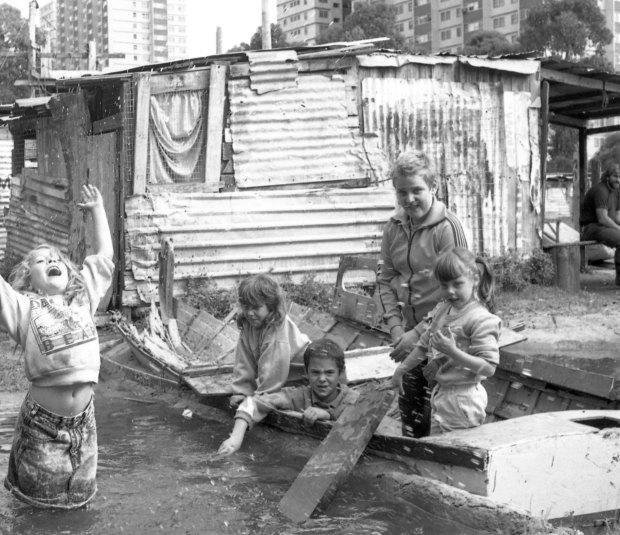
The Cubbies even had a pool – of sorts.Credit: The Age
My mates and I, when we were not billycarting down hillsides and skinning our knees, built treehouses.
In the branches of old cypresses or tall gums, we laid down wonky floors and hammered together wonkier walls, and declared ourselves guardians of our territory, surveying the paddocks below for signs of the enemy.
When we grew bored we clambered down, occasionally taking a tumble when a branch broke, and set off for a swampy forest we called Tarzan’s Jungle, where we set elaborate ambushes for each other.
It was just another free-range weekend in country Australia in the late ’50s and early ’60s.
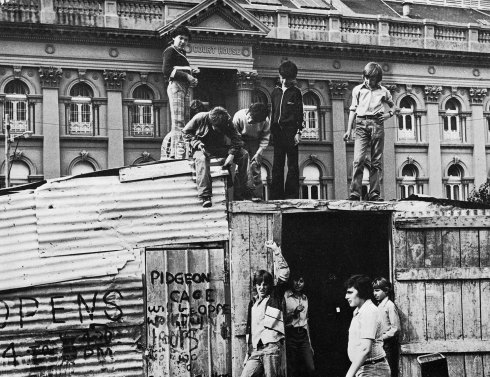
The Cubbies, right across the street from Fitzroy’s grand old town hall and court house.Credit: The Cubbies
Far away from our bush existence, however, in the enclosed inner-city suburbs of Melbourne, there were no empty paddocks for kids to guard, nor many trees big enough to support treehouses, and certainly no dense forests for the laying of ambushes.
And yet, in one of those hard-pressed suburbs, Australia’s first real adventure playground – a place for kids to exercise their free-range imaginations and to construct and knock down and build again their own dreams – began appearing on an empty block right across from the town hall.
It was 1974 in the inner-city Melbourne suburb of Fitzroy.
This place of adventure would come to be known as The Cubbies.
The name evolved as the children of nearby high-rise tower blocks took to building makeshift cubby houses from cast-off building materials and anything else they could scrounge.
This was no park with swings or colourful slides. It was nothing at all like the self-consciously rustic spaces built of green pine logs that town councillors liked to call adventure playgrounds.
It was, to many of those who considered themselves upstanding citizens, little more than a junkyard heaving with brats up to no good.
But to generations of children without their own backyards, many of whom lived in Fitzroy’s four 20-storey housing commission towers, their families from an ever-expanding range of nations, and some whose heritage stretched for more than 60,000 years in this place we call Australia, it was a rough version of paradise.
It was theirs to make whatever they wished, without meddling from the adult world, with no more than a few “grown-ups” standing by if needed.
In time, the children figured out how The Cubbies could house pet rabbits, guinea pigs and even a sheep who became known as Lambchops.
Almost unbelievably to children living in little high-rise flats, their greatest and most unattainable dream “to have me own dog”, they also raised a puppy that became a large happy dog called Ruffy.
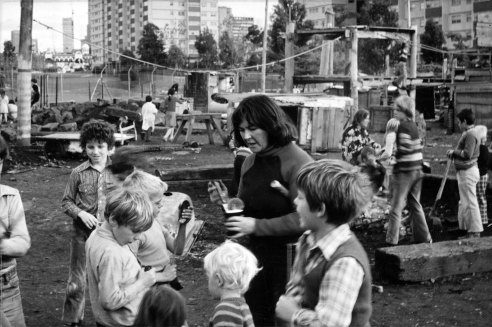
Joan Healey, author and founder of The Cubbies, surrounded by children who gravitated to the place.Credit: The Cubbies
Joan Healey has documented the often uncertain rise of The Cubbies in a new book, The Cubbies: The Battle for Australia’s First Adventure Playground.
In doing so, she unapologetically takes the side of glorious chaos and risk-taking over tiresome order as a way to enrich children’s lives and to allow them to grow and learn.
Now aged 90, Healey declares that one of the motivations that keeps her writing is “watching kids being smothered in safety blankets of rules, regulations, fear of litigation and helicopter parenting”.
Healey knows the story of The Cubbies because she started the place and lived with it for years.
And she doesn’t try to sugar-coat what was often a wild ride.
“Of course, it wasn’t all happy little munchkins tripping down yellow-brick roads; there were plenty of potholes and briar bushes along the way, and we all tumbled into them while we happily skipped together down the road,” she writes.
Funding was usually tight or non-existent. There were battles with officialdom to allow The Cubbies to exist. One dreadful night, persons unknown – possibly drug dealers who had been told to stay away – blew up the Nissen hut that provided shelter and in which all the playground’s tools resided.
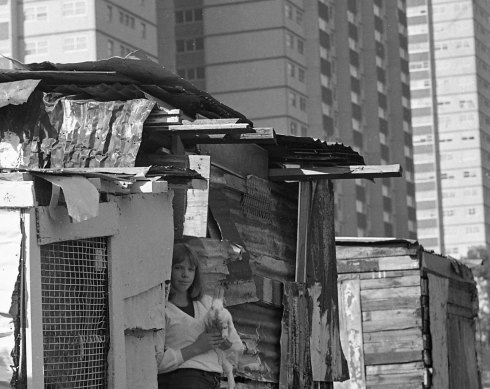
Colleen Sauvarin, 13, with her pet rabbit at The Cubbies, in the shadow of Fitzroy’s tower blocks.Credit: John Lamb
Healey was a young journalist who – like many other young Australians uninspired by the Menzies years of the 1950s – took a cheap berth on an ocean liner to discover the wide world.
She drifted for years around Canada, Mexico, Europe and Britain, “floating, working and exploring”.
“It was on these travels, wandering the streets of London’s Notting Hill late one afternoon, that I stumbled upon a curious place – a higgledy-piggledy forest of turrets and tyres, splashed wildly in paint, toppling over a wooden fence like a giant pumpkin plant, with swarms of kids clambering all over it,” she writes.
“What on earth was it? Kids were loving it. Who had the imagination to create such a place? Well, it was kids themselves, I found out. And it was called an adventure playground.”
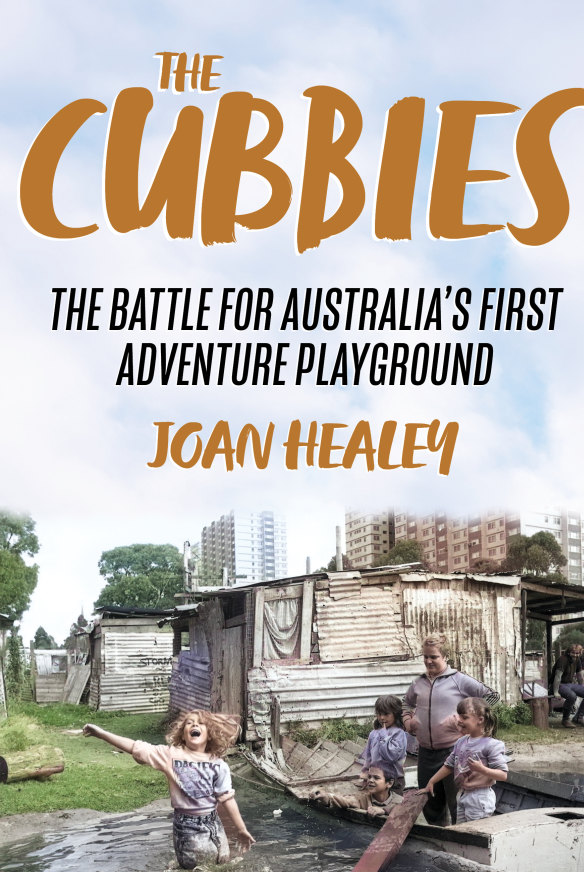
Joan Healey’s book: an inspirational story of granting children the freedom to play against all odds.Credit: Monash University Publishing
Armed with the knowledge that evidence leading back to junkyard playgrounds in Denmark in the 1940s proved that children developed their faculties to an astonishing degree if left to explore and learn, Healey brought the concept home to Australia.
It was the Whitlam years, and nothing seemed impossible.
And so, 50 years ago, The Cubbies were born.
Joan Healey’s telling of it is exhilarating, moving and inspirational.
Today, children still play at The Cubbies, amid trees and hillocks and pre-made cubby houses, though the old free-range risk-taking and makeshift cubby building is constrained by 21st-century order. And across Melbourne, several other adventure playgrounds exist: at Prahran, St Kilda, The Venny in Kensington, and Skinners in South Melbourne (which happens to be my own grandchild’s favourite).
The Cubbies: The Battle for Australia’s First Adventure Playground, by Joan Healey, Monash University Publishing.